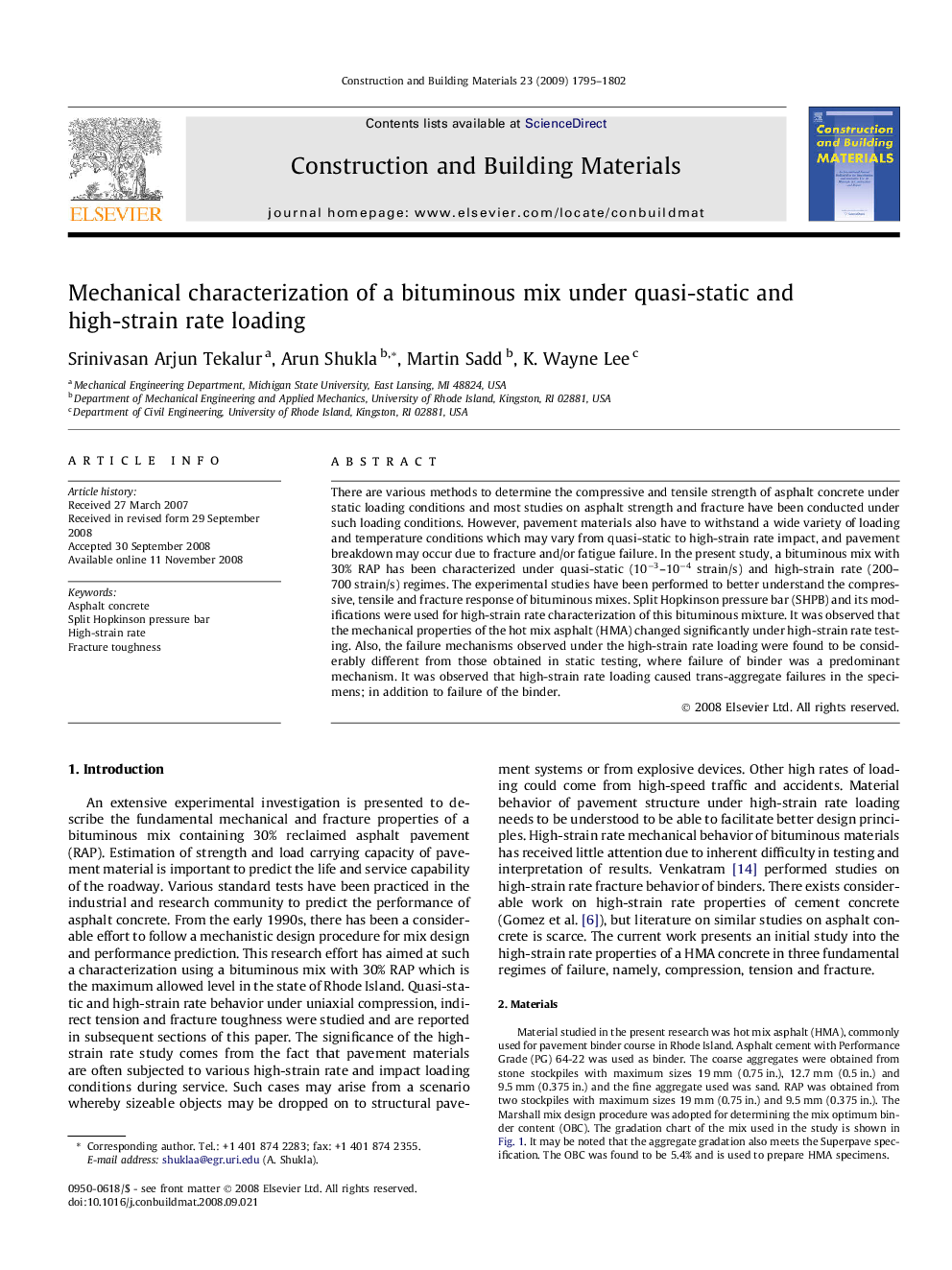| Article ID | Journal | Published Year | Pages | File Type |
|---|---|---|---|---|
| 260721 | Construction and Building Materials | 2009 | 8 Pages |
There are various methods to determine the compressive and tensile strength of asphalt concrete under static loading conditions and most studies on asphalt strength and fracture have been conducted under such loading conditions. However, pavement materials also have to withstand a wide variety of loading and temperature conditions which may vary from quasi-static to high-strain rate impact, and pavement breakdown may occur due to fracture and/or fatigue failure. In the present study, a bituminous mix with 30% RAP has been characterized under quasi-static (10−3–10−4 strain/s) and high-strain rate (200–700 strain/s) regimes. The experimental studies have been performed to better understand the compressive, tensile and fracture response of bituminous mixes. Split Hopkinson pressure bar (SHPB) and its modifications were used for high-strain rate characterization of this bituminous mixture. It was observed that the mechanical properties of the hot mix asphalt (HMA) changed significantly under high-strain rate testing. Also, the failure mechanisms observed under the high-strain rate loading were found to be considerably different from those obtained in static testing, where failure of binder was a predominant mechanism. It was observed that high-strain rate loading caused trans-aggregate failures in the specimens; in addition to failure of the binder.
